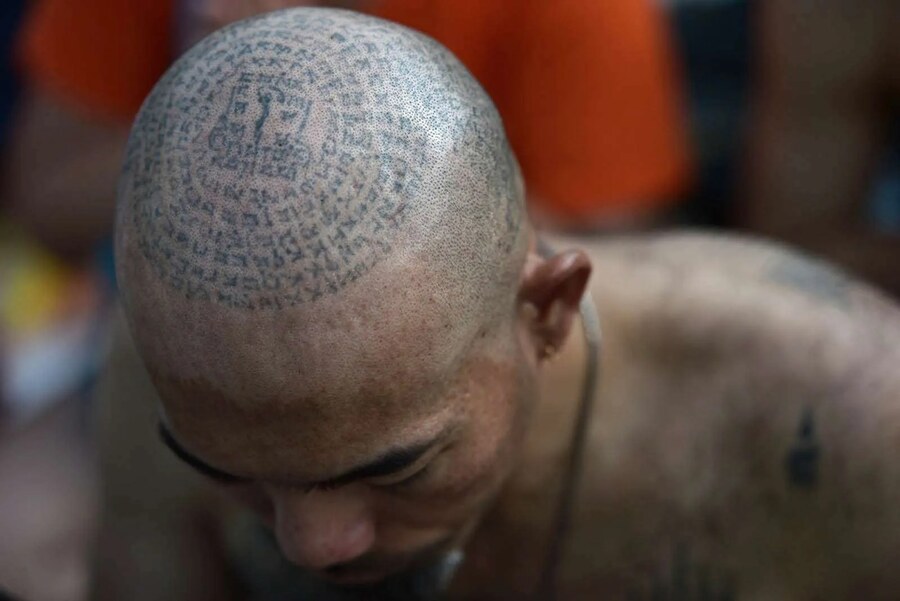Sacred Ink: The Spiritual Journey of Sak Yant Tattoos
Sak Yant, also known as Yantra tattoos, is a form of sacred body art deeply rooted in the ancient traditions of Southeast Asia. These intricate tattoos are not merely decorative; they are imbued with spiritual significance, believed to offer protection, power, and good fortune to the wearer. The practice of Sak Yant has a rich history that spans centuries and is intertwined with the religious and cultural fabric of Thailand, Cambodia, Laos, and Myanmar.

The origins of Sak Yant can be traced back to the earliest animist beliefs and the later influence of Hinduism and Buddhism in the region. The word “Sak” means “to tattoo” in Thai, while “Yant” is derived from the Sanskrit word “Yantra,” referring to mystical diagrams used in meditation and rituals. These tattoos often incorporate symbols, geometric designs, and ancient script, each element carrying its own specific meaning and purpose.
Traditionally, Sak Yant tattoos are created using a bamboo rod or a long metal needle, a method known as “hand-poking.” This technique involves dipping the needle into ink and carefully tapping it into the skin, one dot at a time. This process is not only time-consuming but also requires a high level of skill and precision. The result is a tattoo with a distinctive look, characterized by fine, detailed lines that differ from the thicker strokes produced by modern tattoo machines.

The process of receiving a Sak Yant tattoo is a deeply spiritual experience, often performed by a monk or an ajarn (a master practitioner). These individuals are not just skilled tattooists; they are also respected spiritual leaders who have undergone extensive training in both the art of tattooing and the esoteric knowledge associated with each design. The process typically begins with a ritual to invoke blessings and protection, followed by the selection of a design that aligns with the individual’s spiritual needs and aspirations.
Among the most popular Sak Yant designs are the Hah Taew (five lines), Gao Yord (nine spires), and Paed Tidt (eight directions). Each of these designs carries specific meanings and blessings. For instance, the Hah Taew is believed to offer protection against evil spirits and bad fortune, while the Gao Yord is associated with power and authority. The Paed Tidt provides protection in all directions, ensuring the wearer is safeguarded from harm wherever they go.
The significance of Sak Yant extends beyond the tattoo itself. The ink used in traditional Sak Yant is often mixed with sacred ingredients, such as snake venom, herbs, or even the ashes of revered monks. This infusion is believed to enhance the tattoo’s mystical properties, making it a powerful talisman.
Throughout history, Sak Yant has been worn by warriors, monks, and ordinary people seeking divine protection and blessings. In modern times, the practice has gained international recognition, attracting people from all over the world who are drawn to its spiritual allure. However, it is essential to approach Sak Yant with respect and understanding, acknowledging its cultural and religious significance.
In essence, Sak Yant is more than just body art; it is a profound expression of faith and spirituality. Each tattoo is a testament to the enduring power of ancient traditions, a living legacy that continues to inspire and protect those who wear it. Whether sought for its aesthetic beauty or its spiritual benefits, Sak Yant remains a cherished practice, bridging the past and present in a unique and meaningful way.

